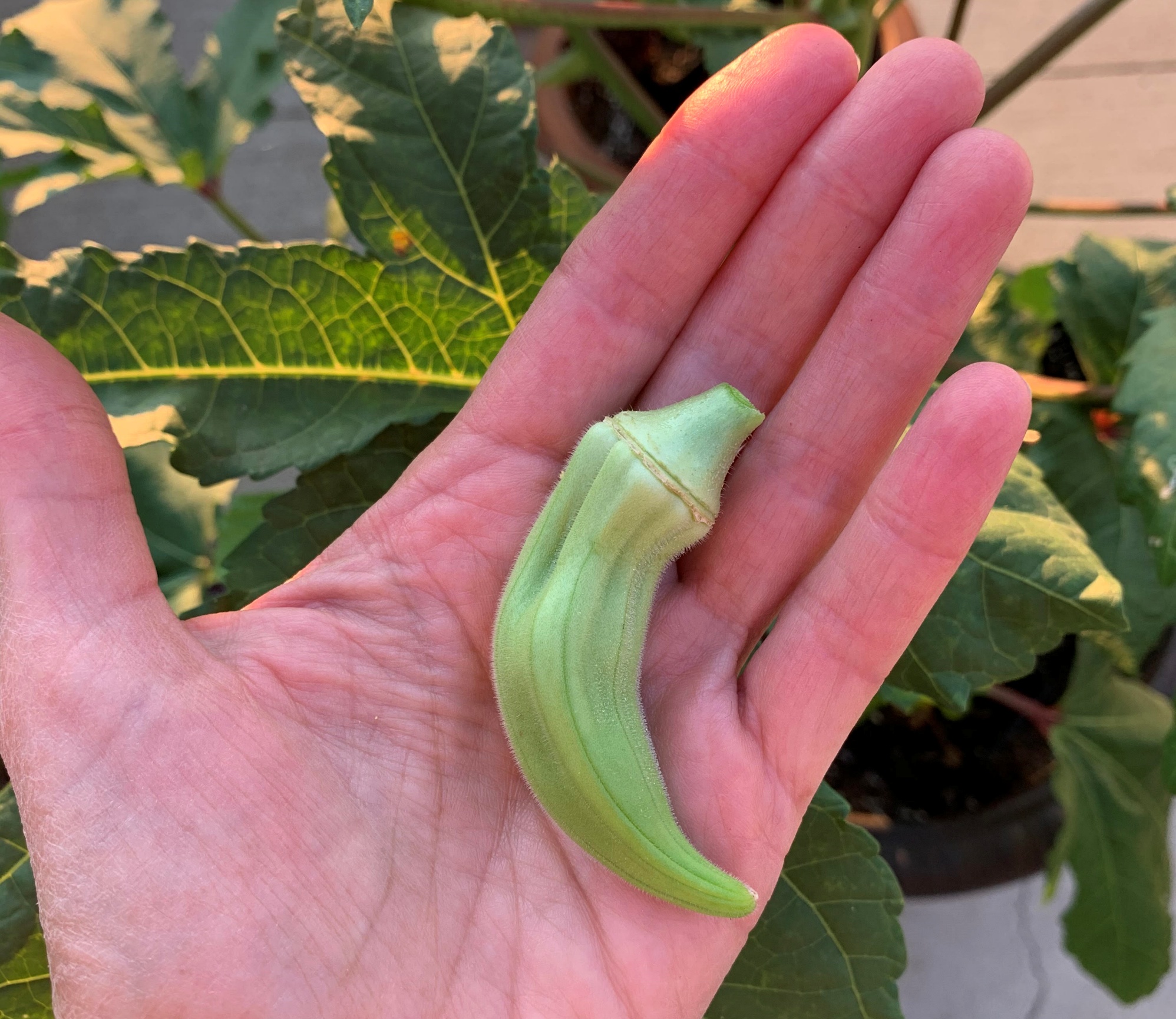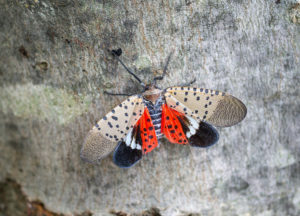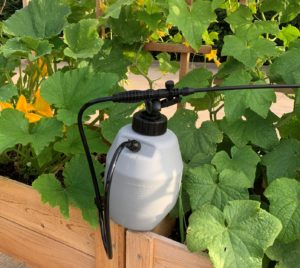Okra is one of my favorite vegetables to grow. It’s a fascinating plant that is heat tolerant, which is perfect for our warmer climate, and it has beautiful hibiscus-like flowers. Plus, its green finger-shaped pods can be prepared a number of ways, including grilled, roasted, fried, and stewed. Who doesn’t like a versatile vegetable!
As wonderful as okra plants are, they can, like other garden varieties, be susceptible to certain pests and diseases. For example, the pods, which typically grow straight with their narrow ends pointing skywards, may sometimes curl to varying degrees. If you’ve ever seen this, you may have wondered, what causes it, and are they safe to eat?
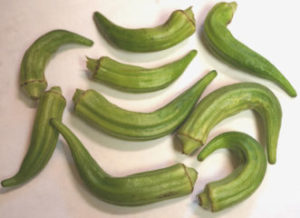
The primary culprits for curling pods are sap-sucking insects like the leaf-footed bug and the stink bug. Leaf-footed bugs are prehistoric-looking insects 1/2″ to 3/4″ in length. They range from brown to gray to black, and they have leaf-shaped flanges on their hind legs, which gives them their name. Locating one leaf-footed bug in your garden isn’t cause for alarm. However, if you find more than one adult or the eggs or nymphs on your plants, you’ll know trouble is on its way.
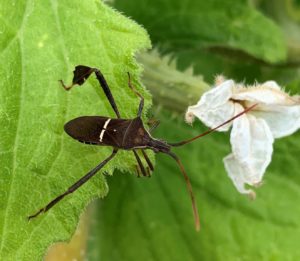
Stink bugs measure 1/2″ to 3/4″ in length, and their shield-shaped bodies are either a marmorated brown (i.e., marbled or streaked) or green.
True to their name, when stink bugs are threatened, or when they are smashed, they can release an offensive odor from glands located between their legs. Leaf-footed bugs have the same defensive capability.
Stink bugs are not indigenous to North America but are thought to have been introduced from China sometime around 2001. Unfortunately, they are increasingly becoming problematic as they move from gardens into homes. While they rarely cause damage once inside, their foul odors can cause homeowners extra grief.
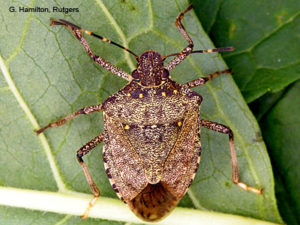
How They Cause Okra Pods to Curl
Both leaf-footed bugs and stink bugs have what is called a proboscis, which is an elongated appendage or tube-like mouth that they use to pierce unopened buds or developing pods in order to suck out the sap. In the process, they inject chemicals into the buds or pods that slows the growth in that area or causes it to stop growing altogether. The rest of the pod, however, will continue to develop, resulting in malformed or curled pods. In addition, wart-like bumps or other oddities may develop where the pods were pierced.
Although the misshaped pods may be unsightly, according to Texas A&M University’s AgriLife Extension, they are safe to eat.[1] It would not be advisable, however, to save the seeds from a curled pod as they can be negatively affected as well.
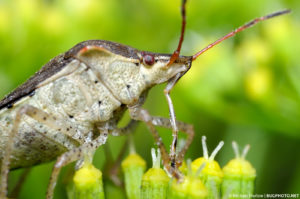
How to Get Rid of Leaf-footed Bugs and Stink Bugs
You may not need to intervene if you find a curled pod only on rare occasions. On the other hand, if you observe more than one malformed pod or if you see more than one leaf-footed bug or stink bug lurking around your garden, you may want to take action as these pests can inflict more damage to your garden than simply an occasional curled pod.
Effective treatments include insect and egg removal and insecticidal soap and neem oil applications. You can learn more details, including recipes for how to make your own treatment solutions here. There are also tips on how you can prevent these insects from setting up camp in your garden. The methods for leaf-footed bugs and stink bugs are the same.
Curled pods may not spell imminent doom for your okra plants, but if you find them, you will know what causes it, and the steps you can take to prevent or eliminate the damage should the need arise.
Note: If you found this article helpful, please share it with someone you think might be interested in it as well. Thank you!
[1] https://aggie-horticulture.tamu.edu/archives/parsons/vegetables/okra.html
